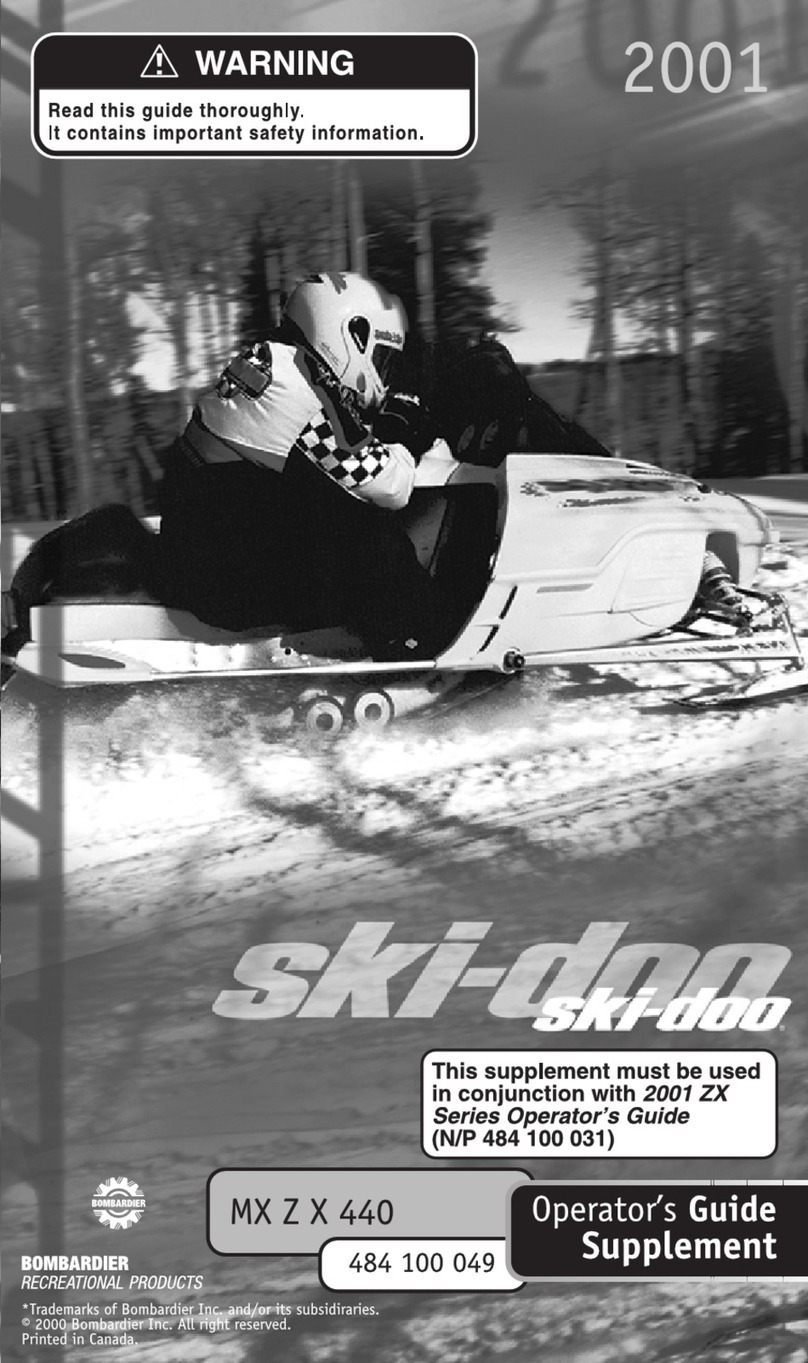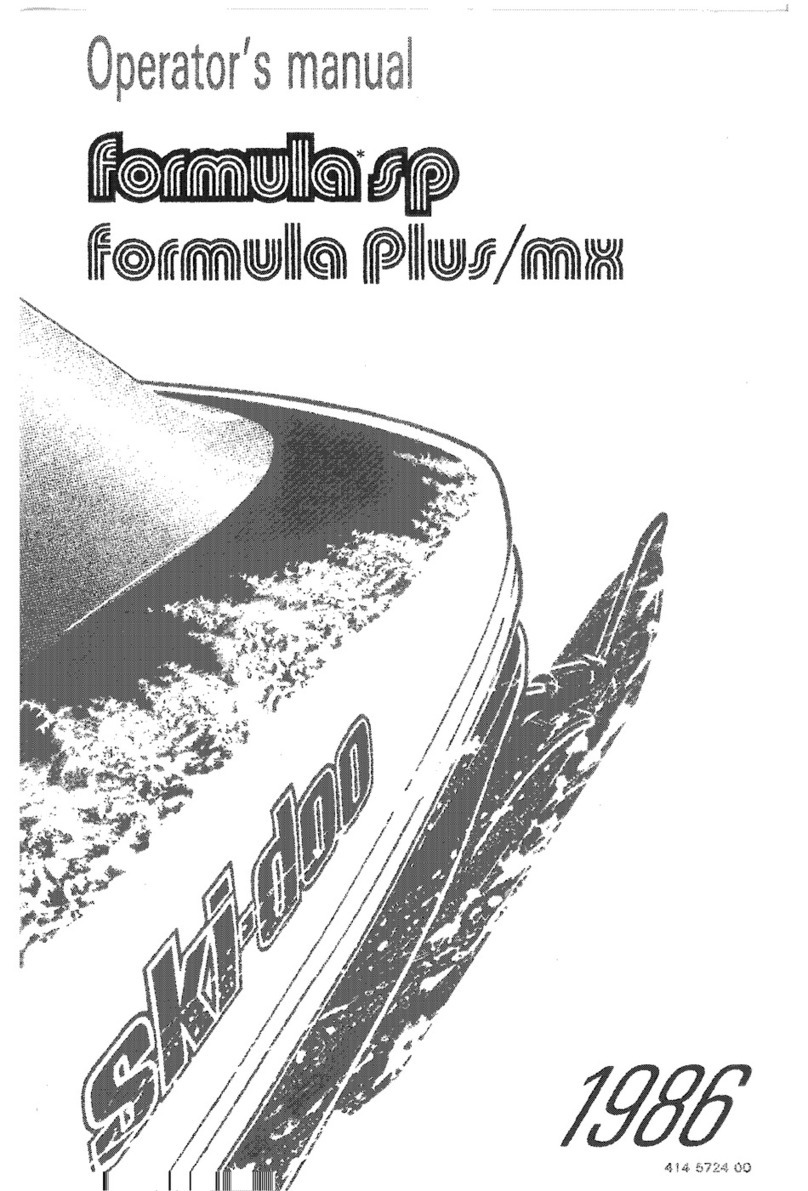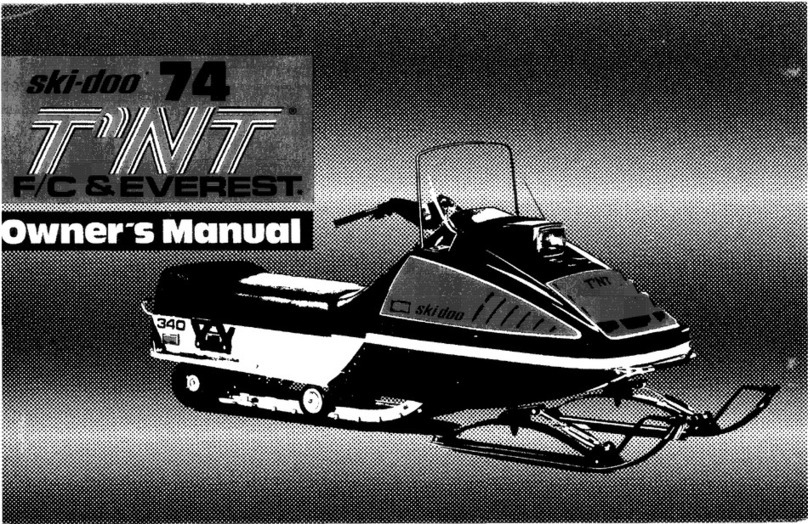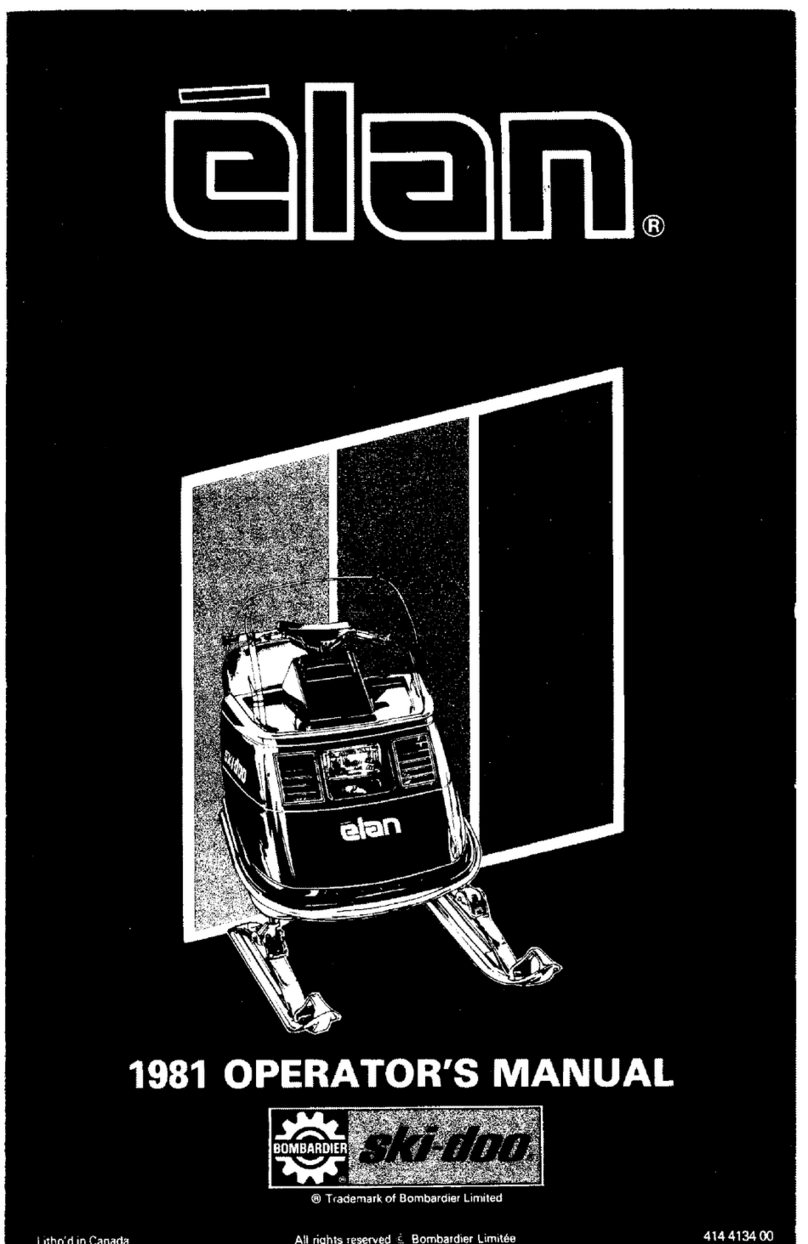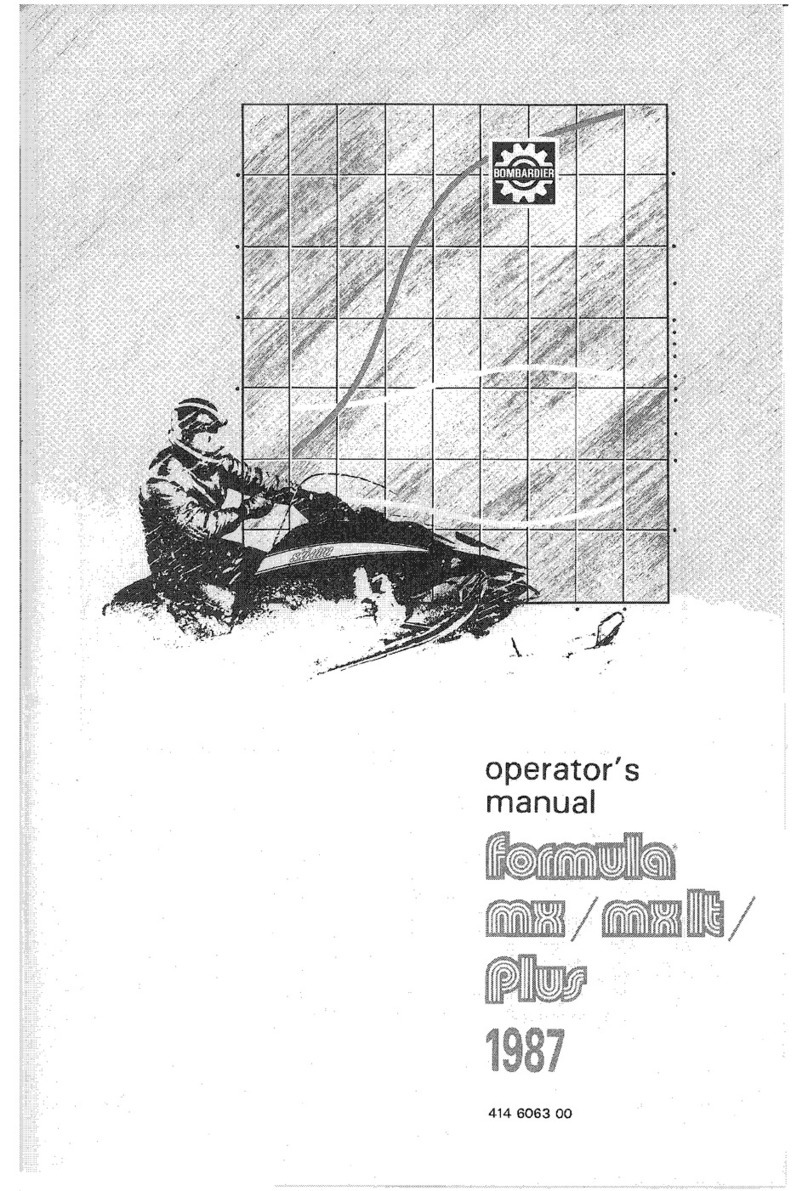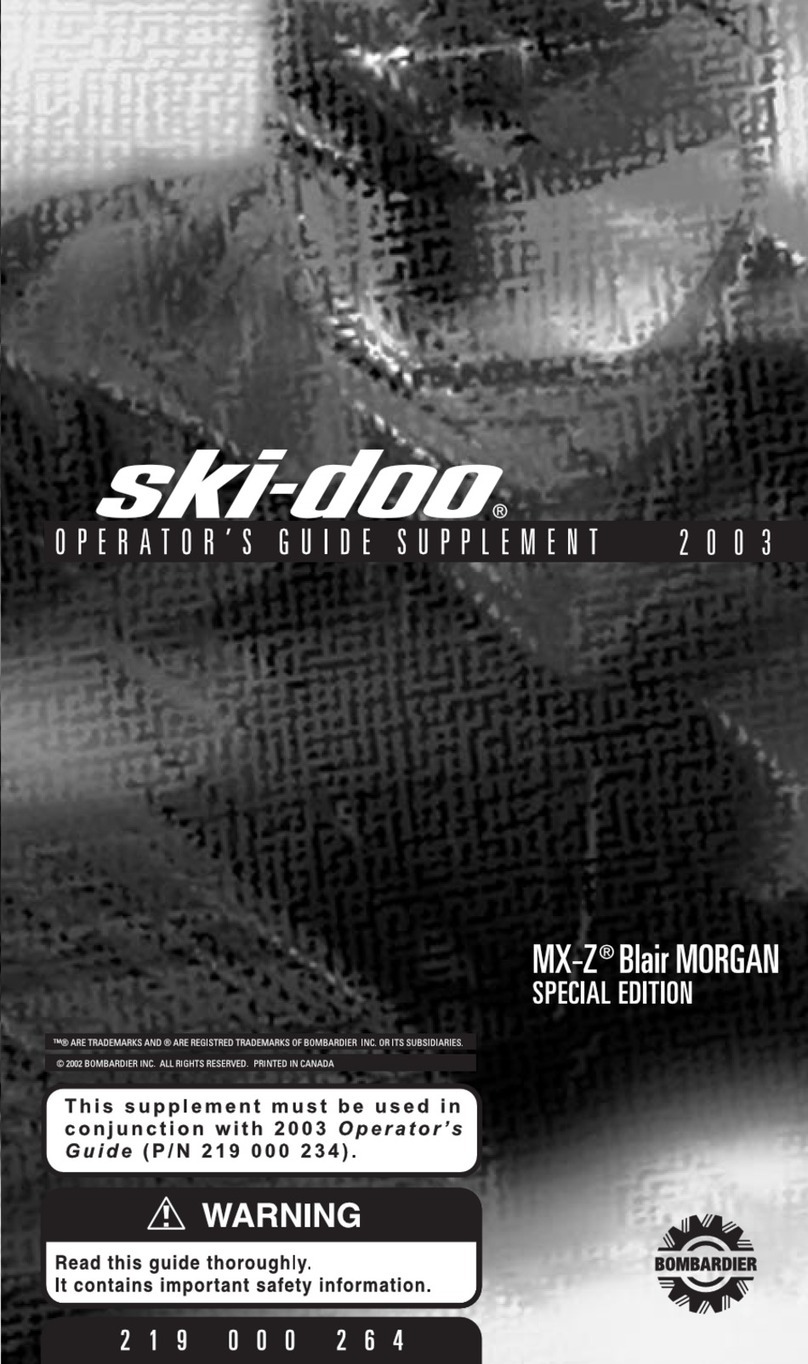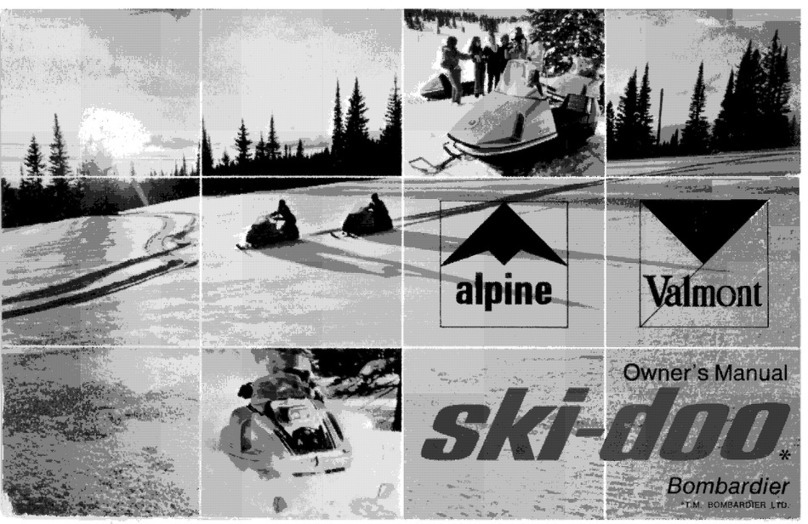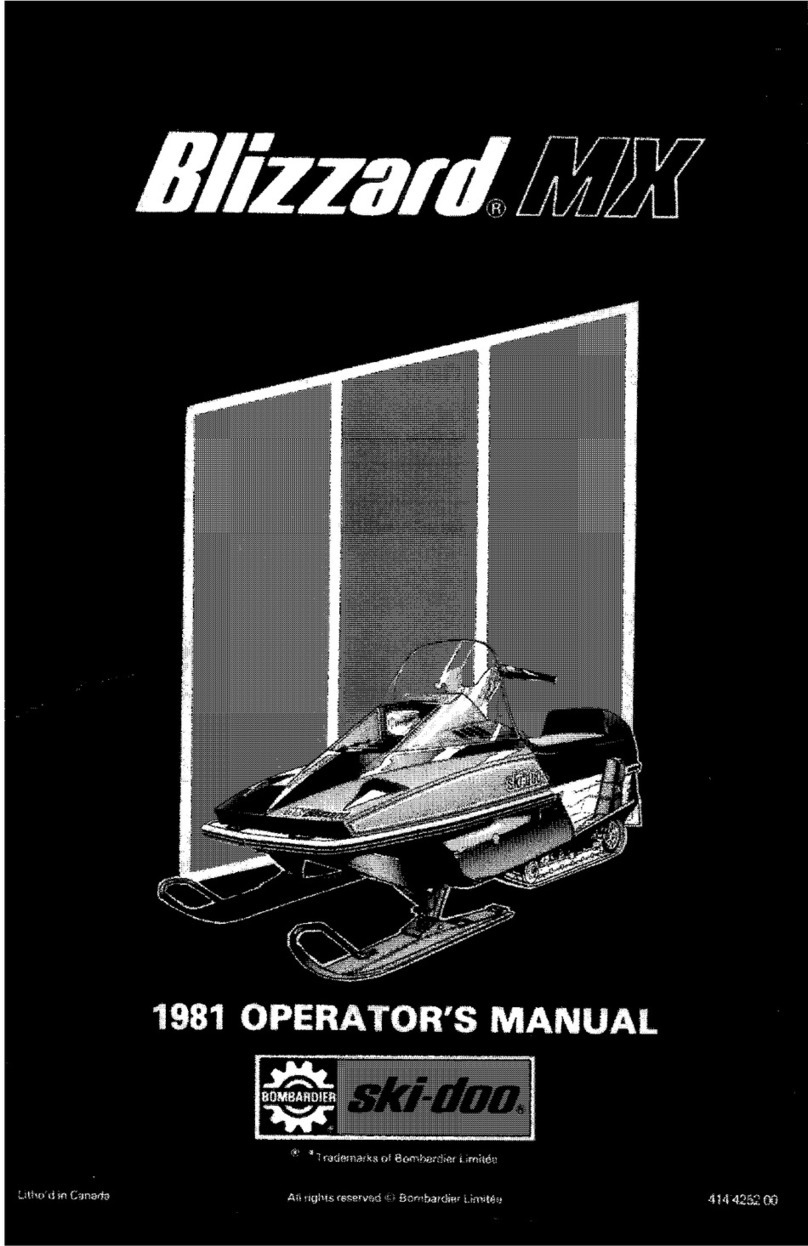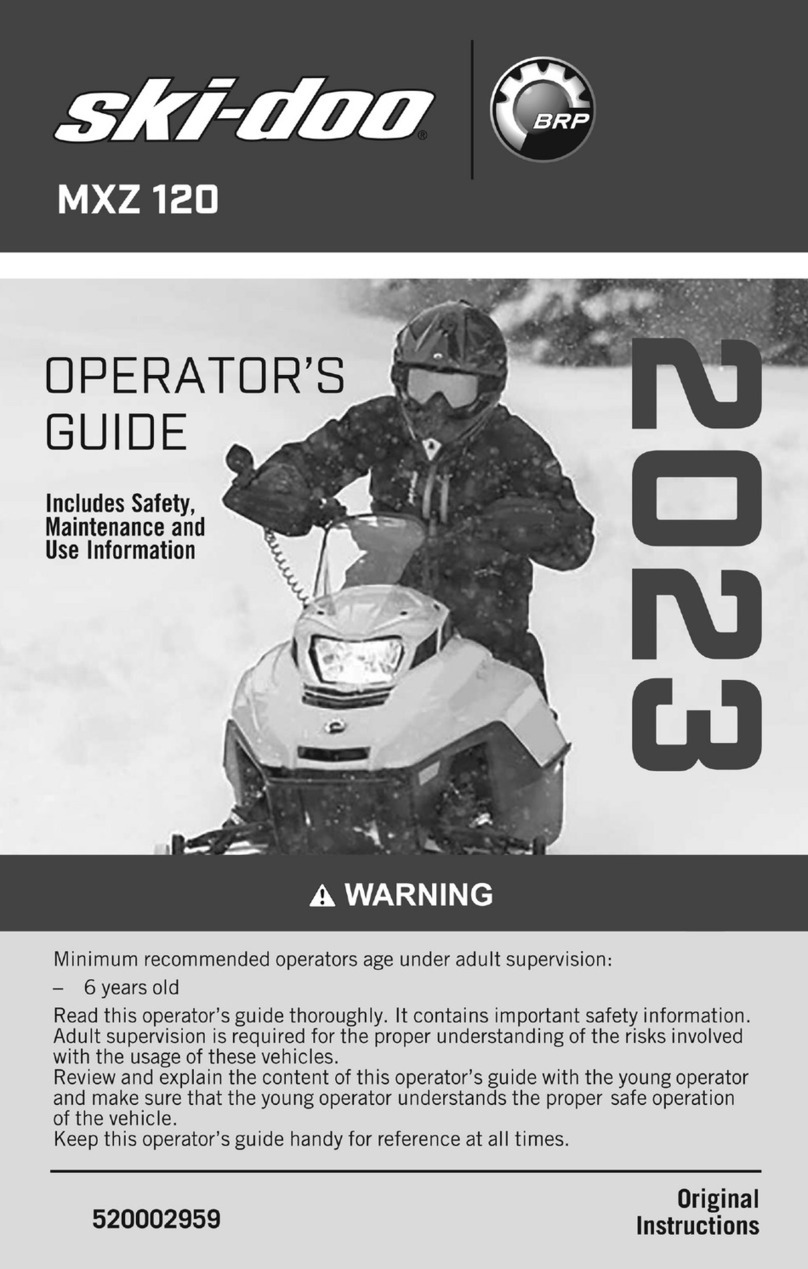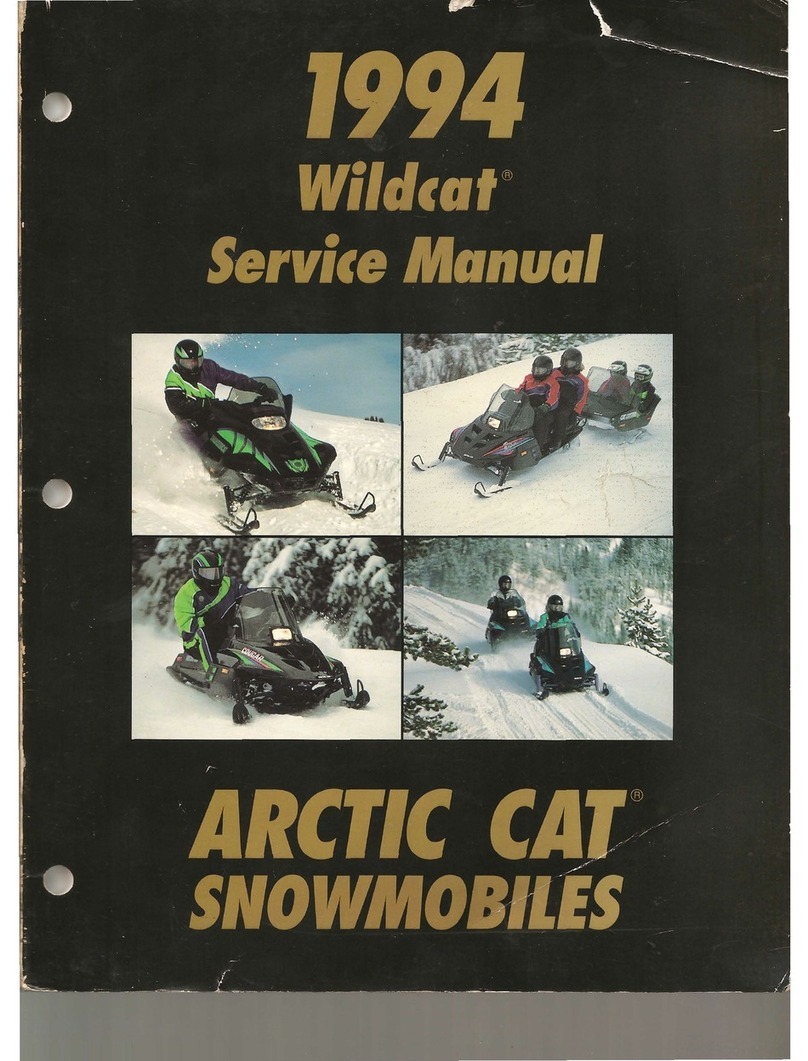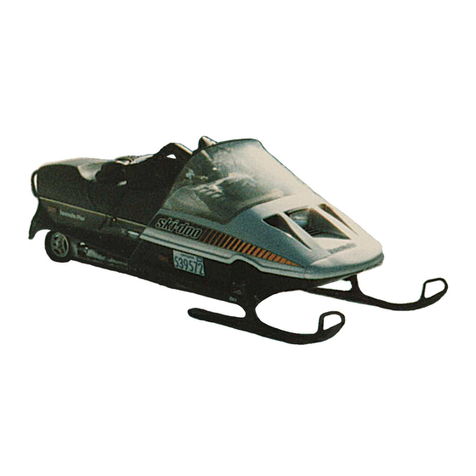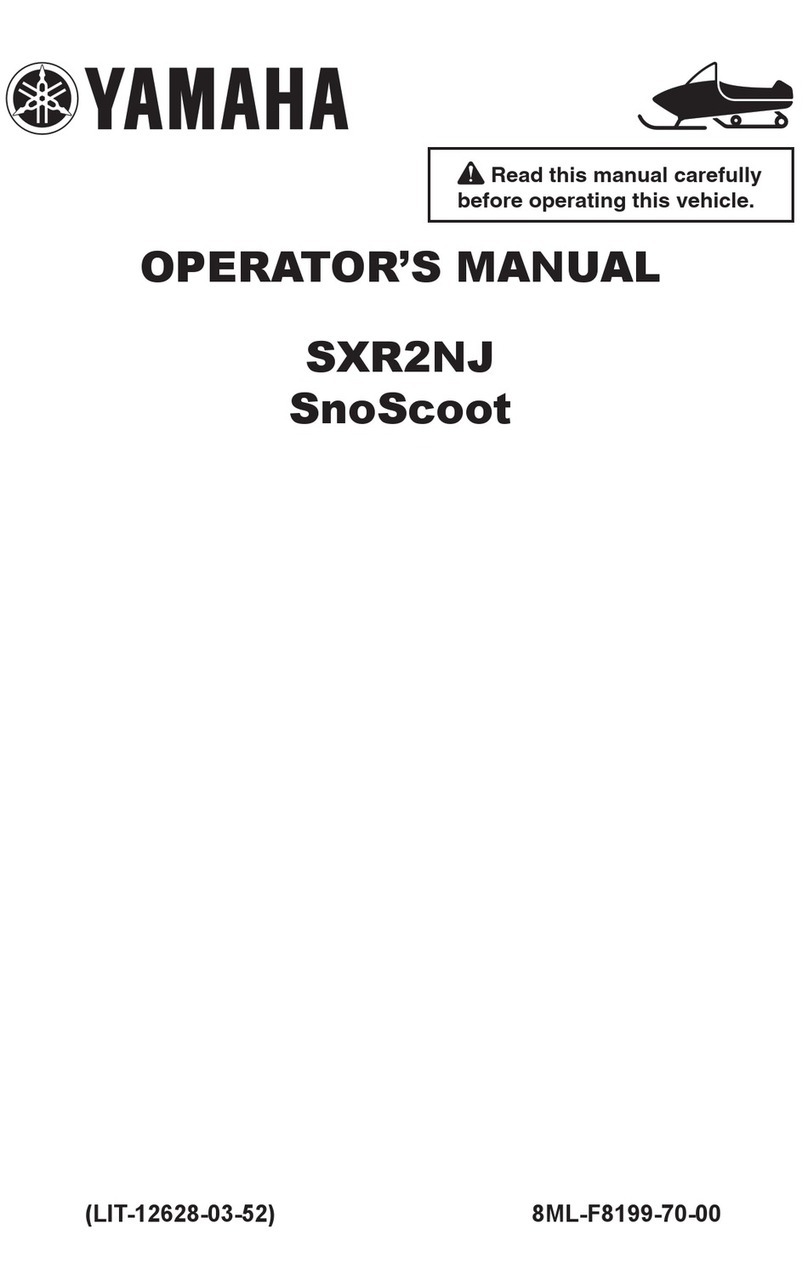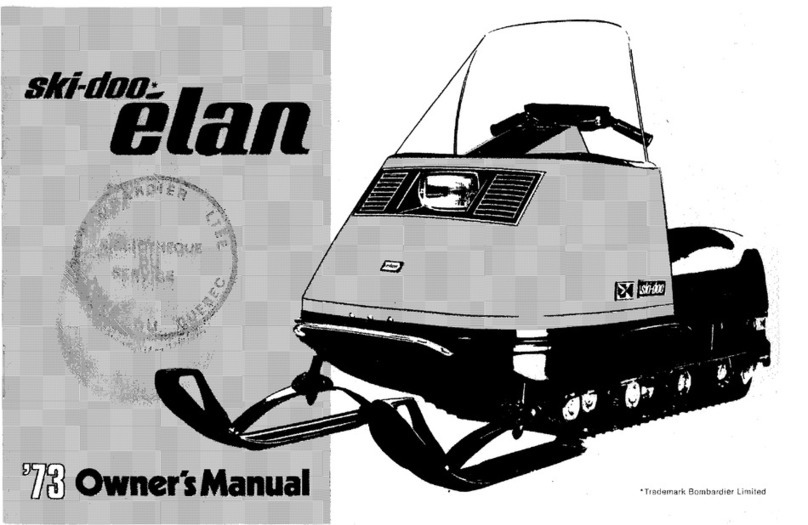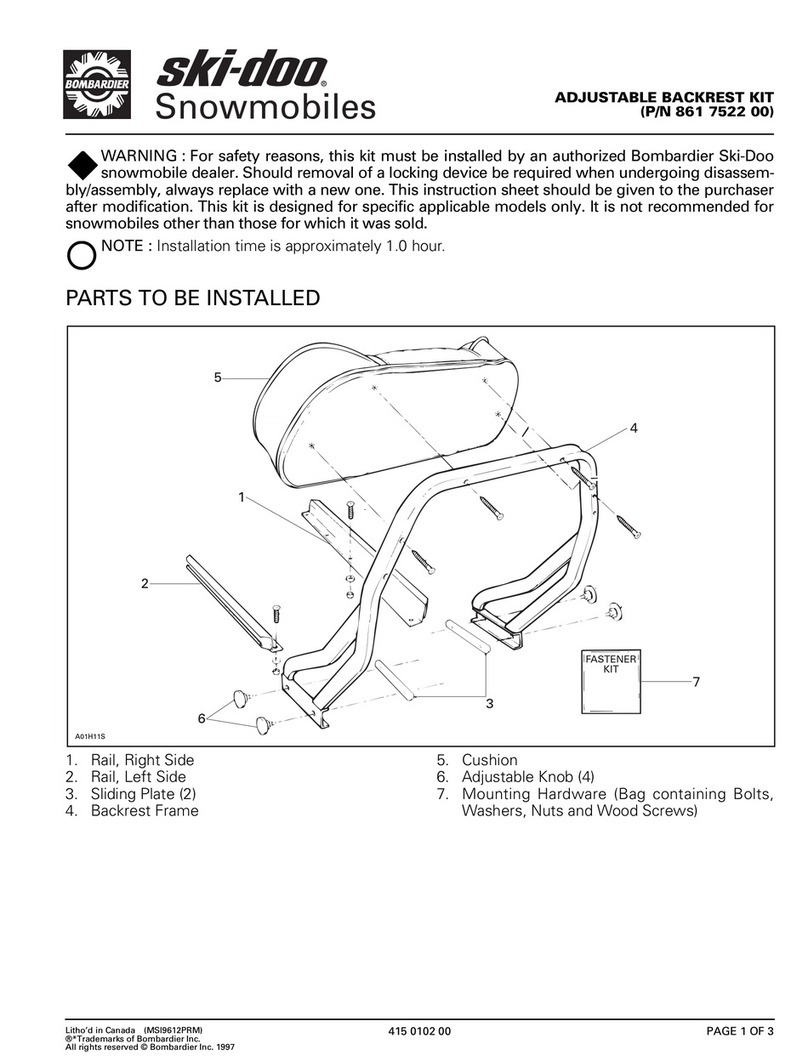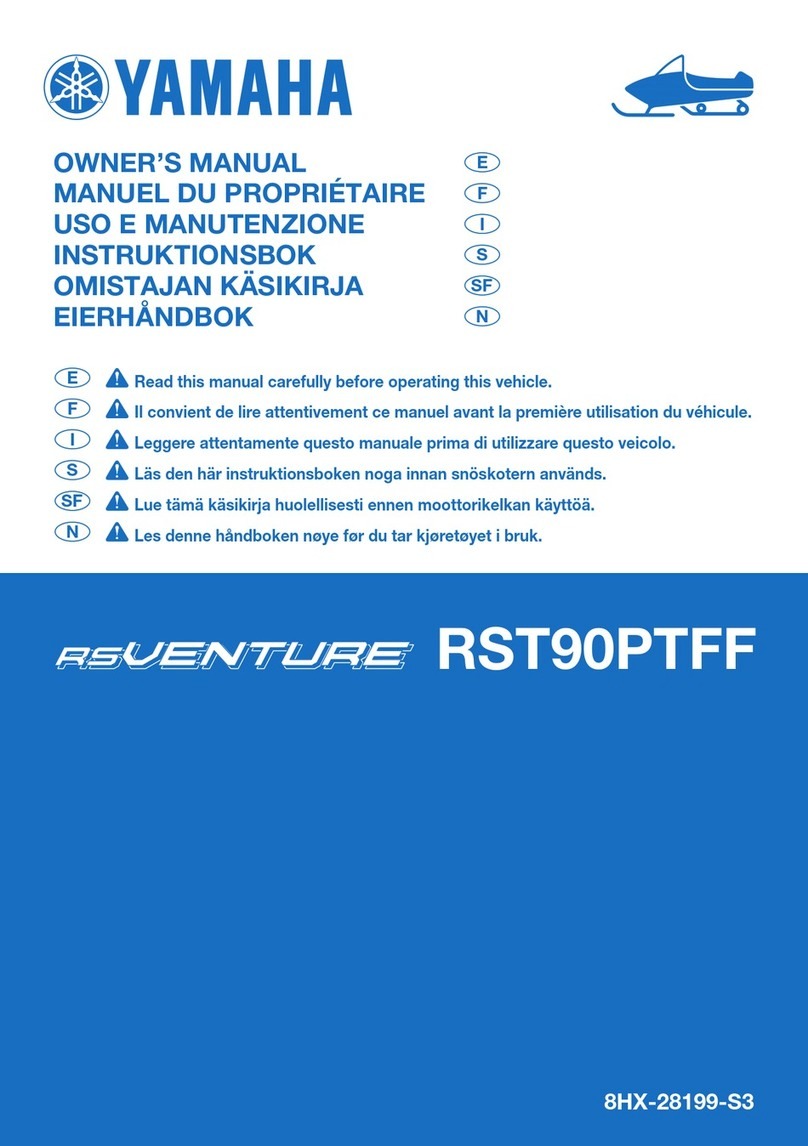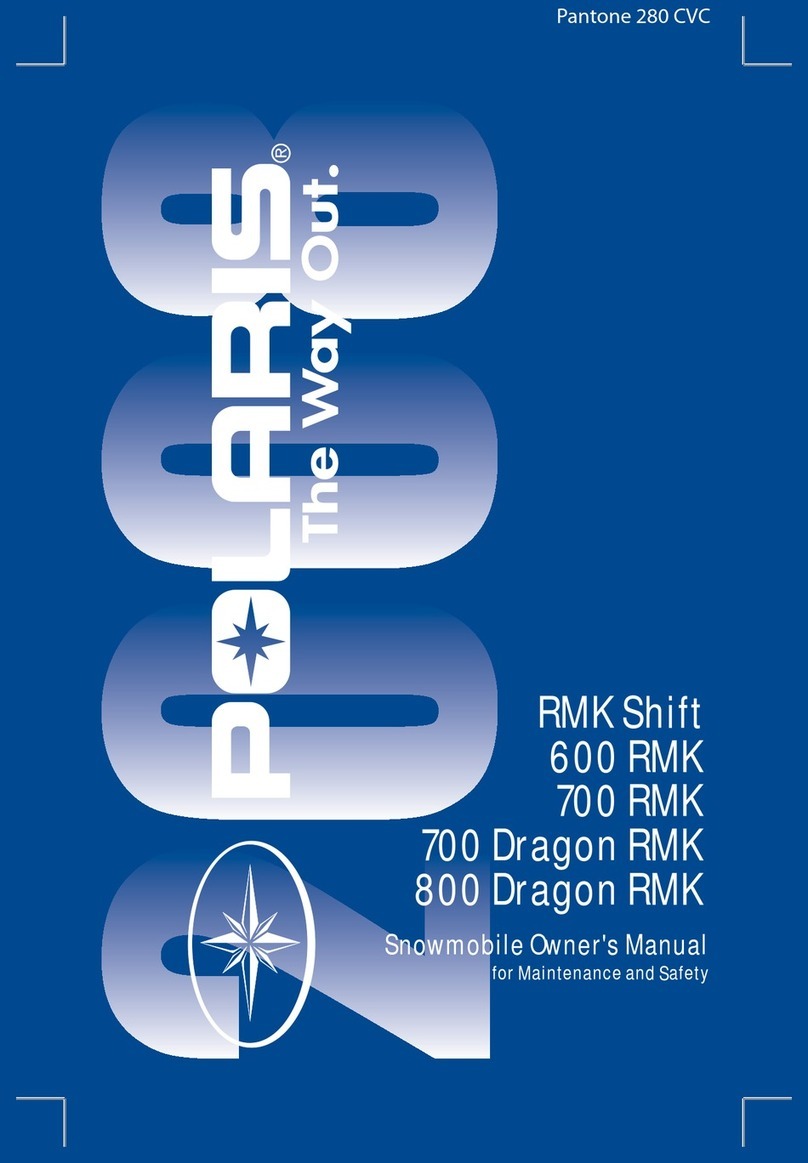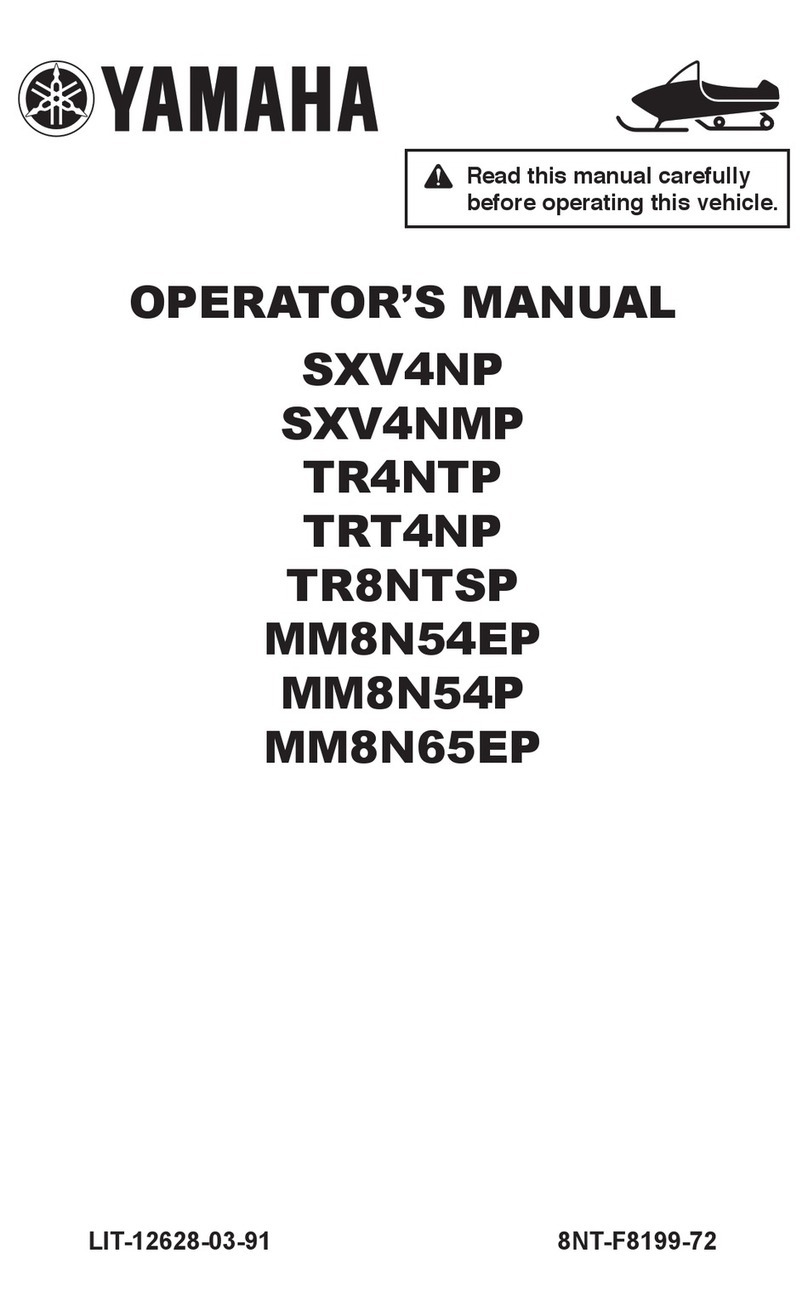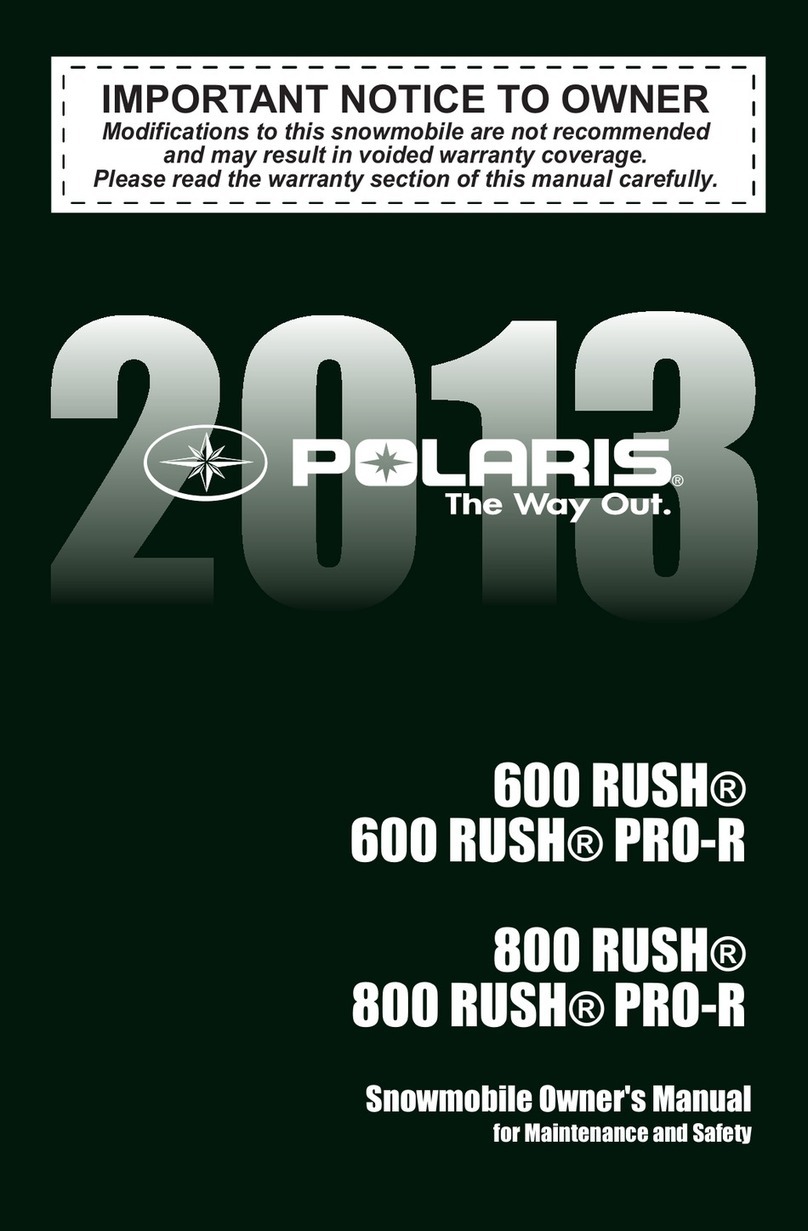
for
driver's weight.
When the
front
ajuster blocks are at the
lowest elevation more weight is dis-
tributed on skis, at the highest position
the weight is transfered
from
the skis to
the track. The rear adjuster blocks
should be adjusted to suit the driver
preference. (The spark plug socket is an
ideal tool to turn adjuster blocks).
Caution: Always
turn
left
side adjuster
blocks in a clockwise direction, the right
side blocks in a counter-clockwise direc-
tion. Left and right adjuster blocks
of
each adjustment must always be set at the
sameelevation.
34
3/4"
Track Tension (Slide Suspension)
~
00
Lift
rear of vehicle and support it
off
the
ground.
Allow
slide to extend normally.
A gap of
3/4"
should exist between slider
shoe and
bottom
inside of track. If track
tension is too loose, the track
will
have a
tendency to thump. Too much tension
will result in power loss and excessive
stresses
on suspension components.
If
n\,-
cessary
to adjust, loosen or tighten ad-
juster bolts located on inner side
of
rear
idler wheels.
Note: Track tension and alignment are
inter-related. Do
not
adjust one
without
the other.
Track Alignment (SIide Suspension)
~
00
After
track tension has been corrected
start the engine and accelerate slightly so
that track turns slowly. Check that track
is well centered and turns evenly. To cor-
rect, loosen the lock
nut
and tighten the
adjuster
bolt
on side where track isclosest
to
the
frame.
Tighten lock
nut
and
recheck alignment.
Warning:
Before checking track align·
ment,
ensure
that the track is free of all
particles
which could be thrown out
while track is rotating. Keep hands, feet
and clothing clear of track.
The Ski-Doo snowmobile should be
stored in such a way that track does
not
stay in contact
with
cement
floor
or
bare ground.
Lift
rear of vehicle
until
track is clear
of
ground the support
with
brace or trestle.
Note: The track should be rotated
periodically, (every 40 days).
(black)
(light
grey)
Normal
(Brownish)
Spark Plug @
00
1. Disconnect spark plug wires and re-
move spark plugs.
2. Check
condition
of
plugs.
• A brownish
tip
reflects ideal condi-
tions. (Correct carburetor adjustment,
sprak plug heat range; etc.l.
• A black insulator
tip
indicates fouling
caused by carburetor idle speed
mixture
too
rich, incorrect fuel
mixing
ratio,
wrong
type
of
spark
plug (heat range), or excessive idling.
• A light grey insulator
tip
indicates a
lean
mixture
caused by: carburetor
idle speed
mixture
adjusted
too
lean,
wrong spark plug heat range, incorrect
fuel mixing ratio, or a leaking
seal
or
gasket.
Caution:
If,
when checking spark plug
color,
you
find
that
the engine is
not
run-
ning under ideal conditions, contact
your
authorized Ski-Doo dealer.
3. Reinstall plugs and connect wires.
Carburetor FlangeNuts
~
After
the first 2 hours of operation,
check tightness of carburetor flange nuts.
Open tab locks, tighten nuts and close tab
locks.
Caution: The tab locks shouId be changed
after being opened three times.
Fuel Tank
00
Remove cap then using a syphon, remove
gasoline from tank.
Warning: Gasoline is flammable and ex-
plosive
under certain conditions. Always
perform
procedures
in a well ventilated
area. Do not smoke or allow open flames
or
sparks
in the vicinity.
What to do
Check
condition
at battery by turning lights ON. If lights are dim or
out,
battery may
be discharged or defective. Contact
your
dealer. If battery is good, check item 2.
Check
for
loose or corroded battery or starter connections. Tighten and clean if
neces-
sary.
Try
to restart engine electrically.
If connections are
tight
and battery is in
work
ing order probable cause
of
trouble
isdefective starter. Contact
your
dealer
for
repair.
Check item 2
of
"Engine turns over
but
fails to start or starts
with
difficulty".
Check fuel line
condition.
(See
item 5
of
"Engine turns over
but
fails to start or starts
with
difficulty").
Readjust the carburetor. (SeeMaintenance Section).
If
trouble persists, contact
your
dealer.
First check item 2 and 3
of
"Engine turns over
but
fails
to
start or starts
with
diffi-
culty".
If
the ignition system still
seems
defective, contact
your
dealer.
If
unable to locate specific symptoms, contact
your
dealer.
Check item 2
of
"Engine turns over
but
fails to start or starts
with
difficulty".
Contact
your
dealer.
Contact
your
dealer.
Check
for
defective or
worn
drive belt. Replace if necessary.
Check track tension and alignment. Readjust to specifications. (SeeMaintenance
Section).
Check item 1 to 5
of
"Engine
lacks acceleration or
power".
Contact
your
dealer.


